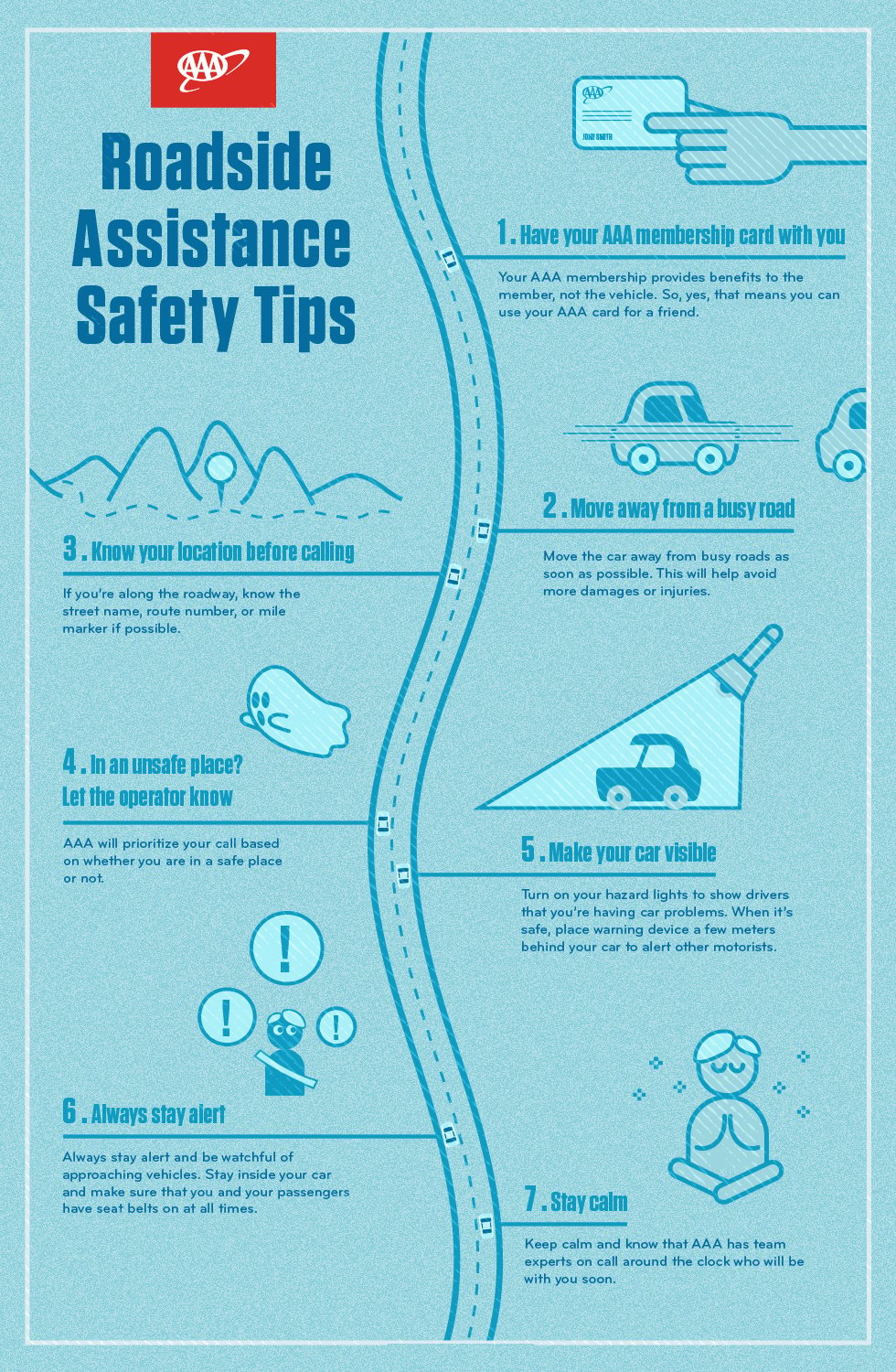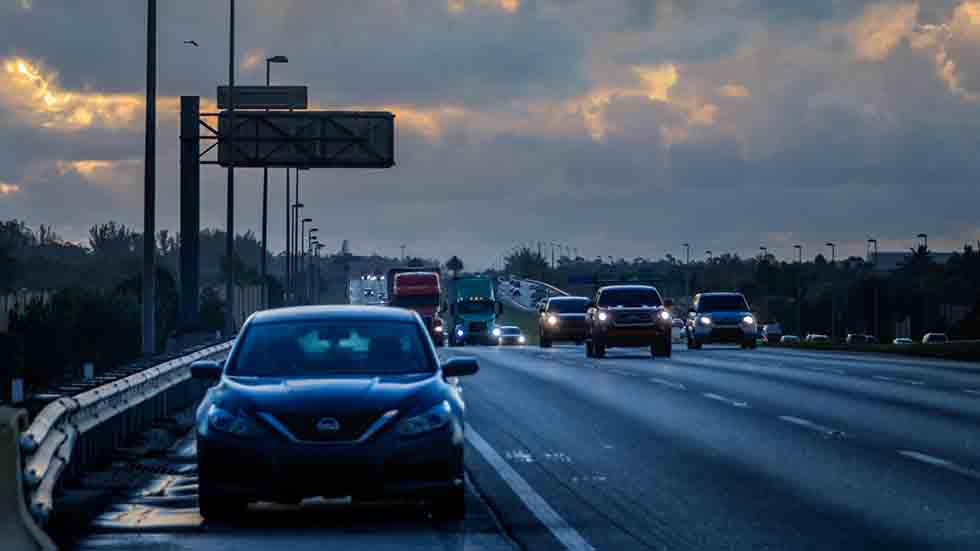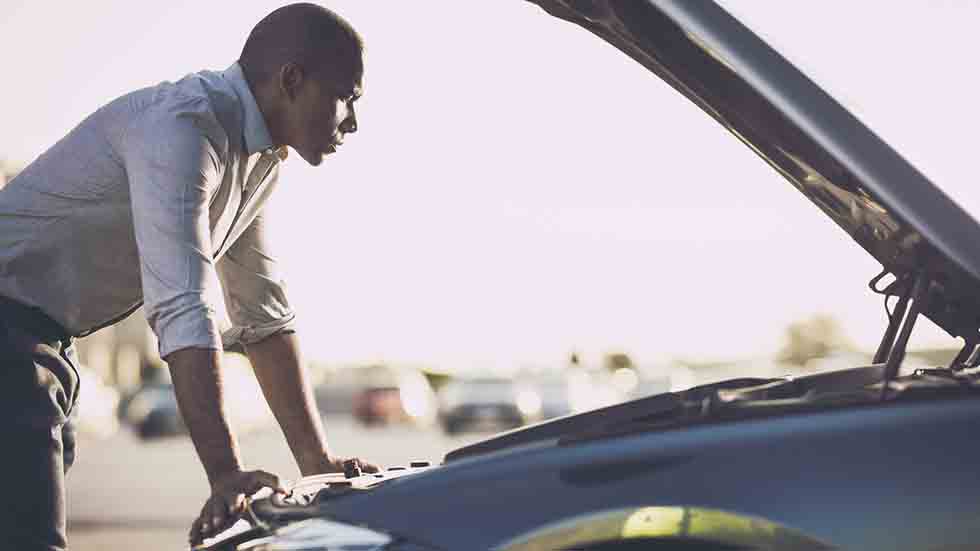What to do When Your Vehicle Breaks Down
How you fare depends on how you respond to your vehicle’s problem

We’ve all been in a situation when our car breaks down. Maybe it’s a dead battery, maybe it’s a flat tire, or maybe it’s a more serious issue. But how you fare when your vehicle fails is often a matter of how you respond. The decisions you make are important and can have positive or negative consequences. Fortunately, most problems are preventable.
Prevention and preparedness are key:
- Get in the habit of conducting periodic safety checks to make sure your vehicle is in good operating condition.
- A safety check includes tires, lights, belts, hoses, fluids and windshield wipers.
- Read your owner’s manual to clearly understand which dash lights or signals indicate your vehicle is not operating properly and what to do in such situations.
- Before a road trip, arrange for a free test of your vehicle’s battery, starting and charging system. This can help determine how much life is left in your battery and if any other components need repairs.
- Program your cell phone with emergency numbers, including that of your roadside assistance provider, and keep a backup written list in your glove compartment.
- Always carry a well-stocked emergency kit and familiarize yourself with the use of safety flares, warning triangles and other emergency equipment.

What to do when trouble strikes
Since surroundings, traffic patterns and vehicle hazards can vary, it’s important to evaluate your specific situation and react accordingly. The following steps are a good starting place:
1. Note your vehicle’s location.
If you encounter a problem while driving, make sure you are aware of your surroundings and general location. Know where you are in relation to a major exit or cross street and look for well-lighted areas. If you are on an interstate highway, note the mile marker, last exit number or nearest rest area.
2. Assess the problem.
While driving, be aware of and know how to respond to warning signs such as steering problems, unusual noises or steam or smoke coming from under the hood. If it’s a flat tire or you run out of gas, try not to panic. Signal, slow down gradually and carefully pull onto the shoulder of the road, avoiding any sudden maneuvers.
3. Pull off the road.
On most roads, you should exit onto the far-right shoulder, as far off the road as possible while remaining on level ground. If you are driving on an interstate or multiple-lane highway with medians, you may consider the left shoulder, again pulling as far away from traffic as possible. If you exit the vehicle, never stand behind or directly in front of it to help avoid injuries if your car is struck by another vehicle.
4. What if you cannot pull off the road?
If your vehicle loses power and is inoperable, switch on safety/emergency flashers. Do not risk personal injury by attempting to push it to a safe location. If you cannot get your vehicle to a location away from traffic, or if you are uncertain about your safety and think your vehicle may get struck from behind, get out of the vehicle and move away from the road to a safer location.

5 Alert other drivers.
Make sure your vehicle is visible to other drivers, remembering that they may be traveling at a high rate of speed.
- Turn on the emergency flashers, especially at night or during inclement weather.
- Raise your vehicle’s hood. If you have a brightly colored handkerchief or scarf, tie it to the antenna or door handle, or hold it in place by closing it in a window.
- Place flares or warning triangles behind your car to direct oncoming traffic away from the vehicle. If you are experiencing a fuel leak or smell fuel fumes, do not ignite a flare or use anything that produces a spark or flame.
6. Communicate your situation.
Once you and any passengers are in a safe location, notify others of your vehicle breakdown. Make note of surroundings and landmarks, buildings or road signs.
- If you have a cell phone, immediately use it to call for help. Make the call from inside your vehicle if you are safely out of traffic. Otherwise, do so at a safe distance from the vehicle and roadway.
7. Remain with your vehicle.
Safety experts agree that under most circumstances if you are able to pull away from traffic, it is safest to remain in your vehicle until a law enforcement officer or road service provider arrives.
- In some circumstances, when there is no other alternative, you may need to rely on the help of a friendly motorist or passerby. Should this be your only alternative to get help, ask for identification including name, phone number and address before accepting assistance. Write this information down and leave it with another person, or in the vehicle, explaining where you are going, when you expect to return and what you hope to accomplish.
- If you choose to exit the vehicle, do so safely and well away from oncoming traffic and your vehicle. If possible, you and any passengers should exit through the side of the vehicle facing away from the road.
- If you choose to stay inside your vehicle, keep the windows almost closed and the doors locked. It’s very dangerous to lower your windows or open your vehicle doors to strangers. If a stranger does stop to offer help, ask the person to call for emergency road service.

What to expect from emergency road services
Most roadside technicians can provide fuel, change tires and boost a battery. If you’re a AAA Member, AAA battery services include testing and on-scene replacement, if the Member wishes. In other instances, technicians can employ basic roadside problem-solving techniques to get the vehicle going without the need for a tow. If the breakdown is due to more severe mechanical or electrical problems, the vehicle will need to be towed to a service center or mechanic.
What to tell the emergency road side service operator or repair garage
Have the following information ready when you call AAA/CAA or other service providers.
- Your AAA/CAA membership number or insurance information, if applicable.
- The phone number where you can be reached.
- Your location — exact address or nearest intersection or exit number.
- A description of your vehicle — year, make model and color.
- License plate number.
- Describe as thoroughly as possible the nature of the problem so the proper service vehicle is dispatched.
- Make certain the service provider is aware of any circumstances that may require special towing or transport considerations, such as an unusual vehicle, a large number of passengers, infants in the vehicle, special medical needs and whether your vehicle uses diesel or an alternative fuel.
- Tell the service provider the repair shop where you want your vehicle taken.
What to do when help arrives
Reputable firms have trained personnel who understand what to do in most situations. It’s important to remain calm and cooperative.
- AAA service personnel should display an approved AAA emblem on their vehicles or produce identification.
- Verify the name of the garage or the provider if you have any concerns.
- Do not attempt to help the service representative unless he or she asks for assistance.
- You may ride with the service provider, but not in your disabled vehicle
- It’s your responsibility to understand what services your emergency road service or insurance policy will cover and to pay for any repairs.
- Always get a receipt.
